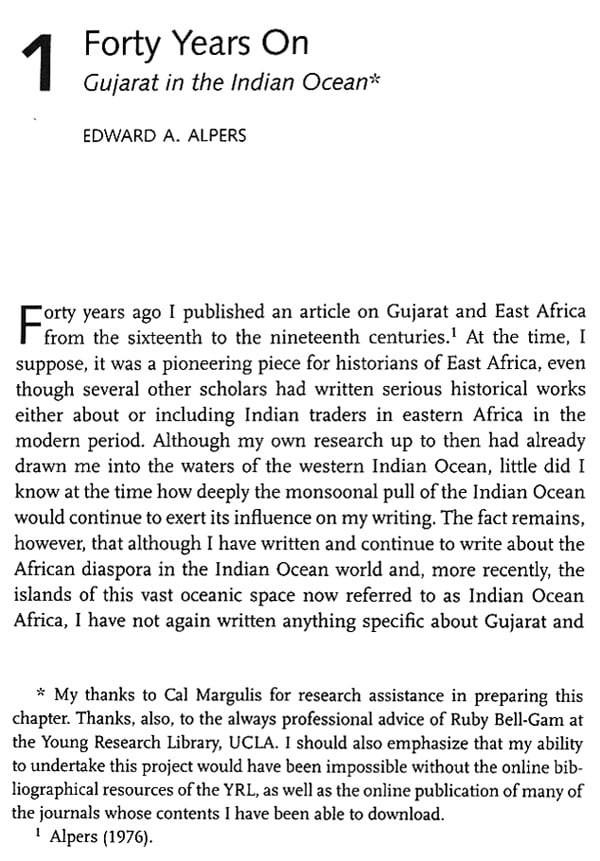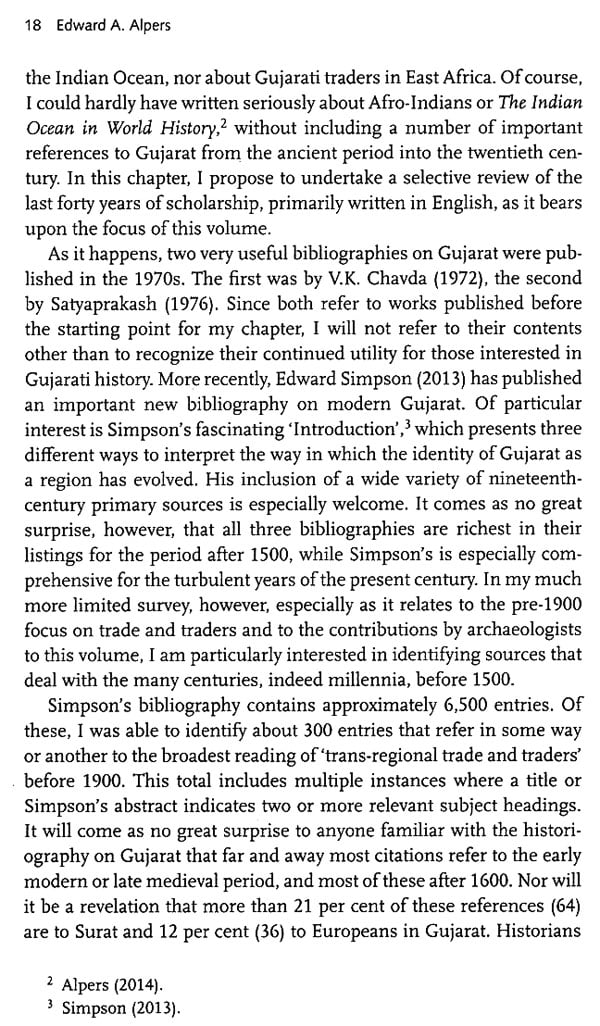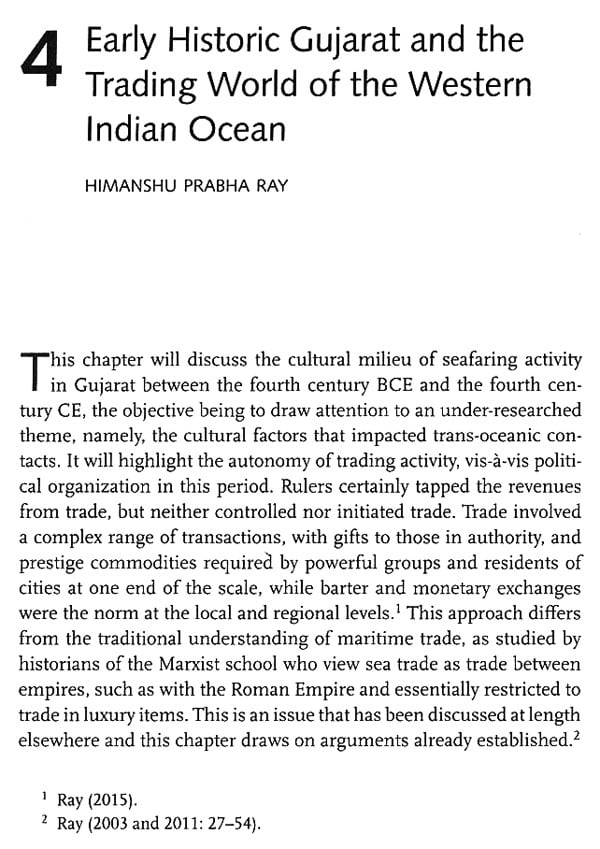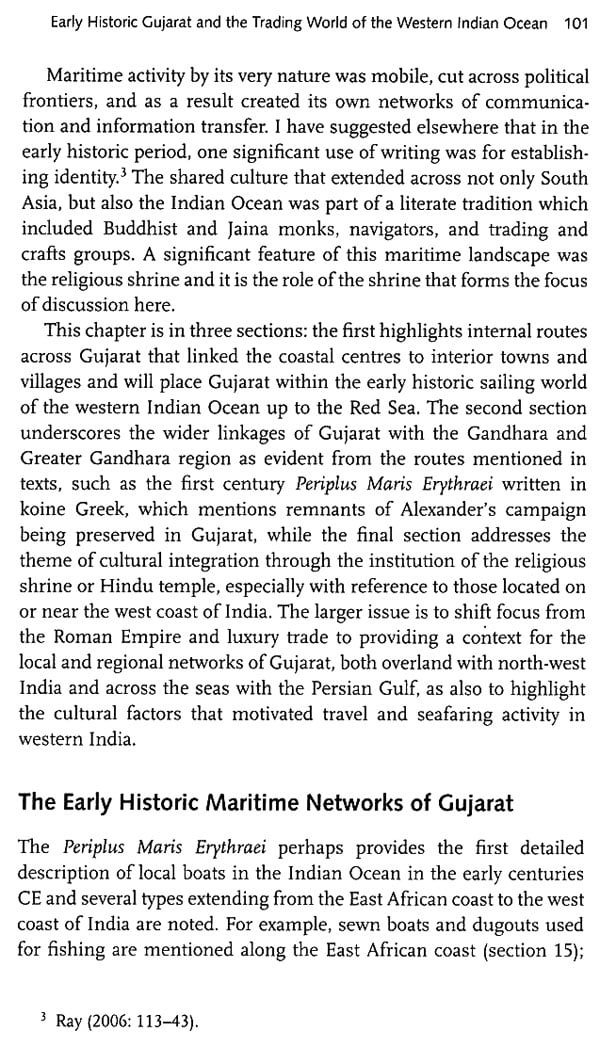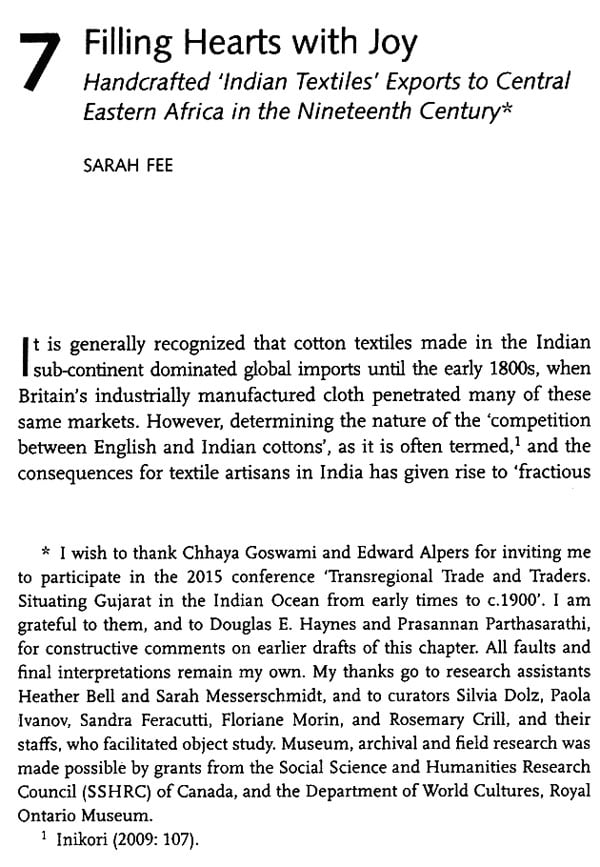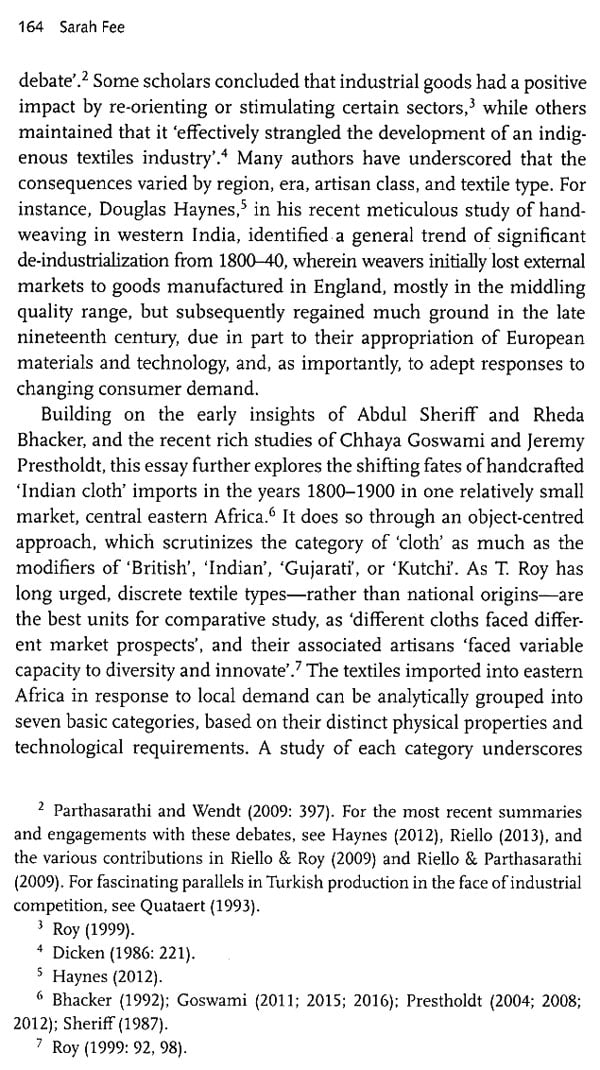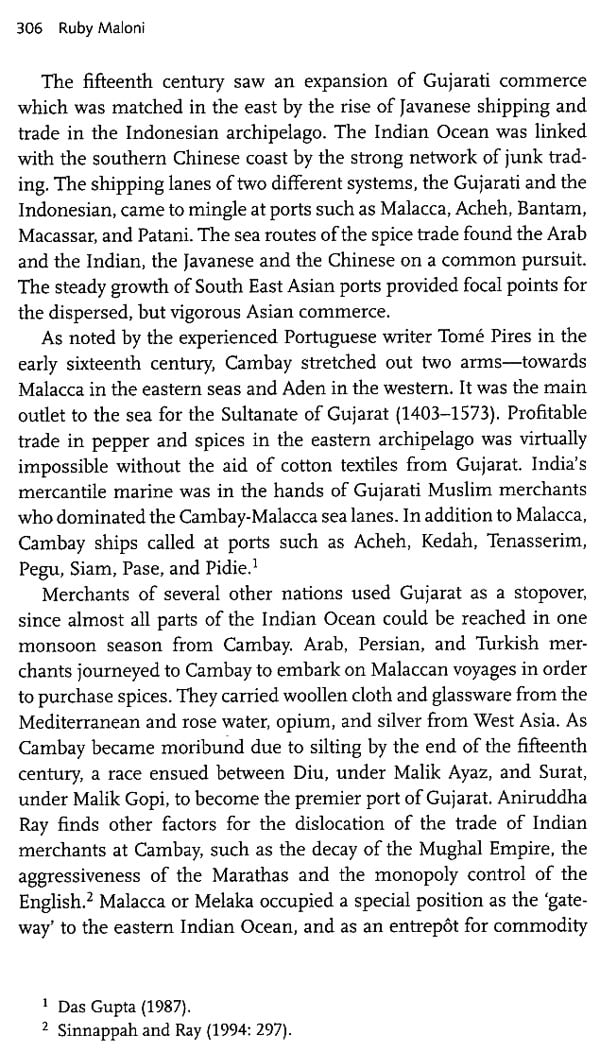
Transregional Trade and Traders (Situating Gujarat in the Indian Ocean From Early Times to 1900)
Book Specification
| Item Code: | NAZ280 |
| Author: | Edward A. Alpers & Chhaya Goswami |
| Publisher: | Oxford University Press, New Delhi |
| Language: | English |
| Edition: | 2019 |
| ISBN: | 9780199490684 |
| Pages: | 406 |
| Cover: | HARDCOVER |
| Other Details | 9.00 X 6.00 inch |
| Weight | 510 gm |
Book Description
Like beads in a string-be it Kachchh, Saurashtra, Gujarat, or Hindustan-for a thousand years the Darialal [sea] has played a fundamental role in the history of Gujarat; and therefore the sea is indeed worthy of study and thought’. Thus writes Gunvantrai Acharya in his thrilling novel Sarkkarbar. He insightfully identifies the sea as a significant and enriching thread of the annals of Gujarat. ‘Those who ignore the sea will never completely understand our region or country’s history,’ he cautions." Indeed, as reflected in his narratives, Acharya rightly understood the impact of the sea on the long littoral of Gujarat for its social, commercial, and cultural life. Clearly, the sea was quite momentous in shaping the history of Gujarat. More than a decade ago, Acharya anticipated his paean to the sea in Darialal, when he emphasized the thousand-year history of attempts by outsiders to conquer or dominate one port after another from Kathiawar through Somnath Patan and Diu to Mandvi. In a certain sense, Acharya mirrored the longue durée perspective of the Annalistes when he interlaced his writings around the sea in assessing the maritime past of Gujarat. And why not, for the sea was quite central to Gujarat’s long and eventful history.
The long-held belief that India’s maritime frontier was more or less irrelevant to the dominant forces in the sub-continent’s history, no longer prevails. In light of India’s extensive littoral, stretching 7,517 kilometres from the mouth of the Ganga in the east to the Gulf of Kachchh in the west,‘ it is surprising to consider how pervasive and enduring this misconception was. From the Bay of Bengal to the Arabian Sea, standing on the shores of Coromandel, Malabar, Konkan, Gujarat, or Kachchh, coastal Indians have for millennia looked to the sea for at least part of their livelihood. Salt production, fishing, and even piracy (always so defined by those being attacked) constituted integral components of coastal societies. Coastal India also played a pivotal role in the larger currents of Indian Ocean commerce; whether or not its inhabitants were fully engaged in overseas trade, they were inevitably drawn into the more global orbit of monsoonal movement that marks the deep history of the Indian Ocean world. Among all of the major coastal zones of India, it is Gujarat that stands out for experiencing the longest recorded history of such extra-continental contacts and exchanges. As far back in time as the third millennium BCE, there exists convincing evidence in the material remains discovered by archaeologists of maritime, contacts between the civilizations of Mesopotamia and that of Harappa. Over centuries, such contacts extended to the Red Sea and north-east Africa, marked by the anonymous botanical exchange of plants and animals between Africa, Arabia, and South Asia. With interruptions occasioned by global climatic change and regional political developments, these maritime connections were refashioned by both Indian and foreign sailors on a regular basis.
Blessed with numerous safe harbours and accessible ports, as well as a vast and richly endowed hinterland, Gujarat was absolutely central to the history of Indian Ocean maritime exchange involving not only goods, but also people and ideas. Although the Gulf of Khambhat became the favoured destination of overseas merchants, other Gujarati ports like Porbandar and Somnath also gained notoriety as ports of trade. During the Early Historic Era (ca. 100 BCE-300 CE), the port of Barygaza (the antecedent of modern Bharuch or Broach) gained renown for its multitude of products and its diverse population. Following the rise of Islam in seventh century Hijaz, Arabia, Barygaza was replaced by Khambhat (Cambay) as the dominant global commercial entrepdét in Gujarat, replicating the same kind of cosmopolitan urban centre as its ancient predecessor. By the time the Portuguese intruded into the Indian Ocean and reached India at the beginning of the sixteenth century, Cambay was acknowledged as the western Indian Ocean equivalent to Melaka in the east. In the early modern period, as the Portuguese were pushed aside by both the Dutch and the English East India companies, Surat emerged as the dominant maritime commercial port, eventually to be superseded in the late eighteenth century by Bombay (now Mumbai, in Maharashtra). At the same time, however, several ports in the Gulf of Kachchh, notably Mandvi, Bhavnagar, Porbandar, Okha, and Dwarka, rose in significance with the decline of Surat. So whatever otherwise one wants to believe about the history of Gujarat, the incontestable fact remains that the Indian Ocean has for thousands of years played a vital role in the shaping of its history. Perhaps it is this very rich history of the ports of Gujarat that stimulated Acharya to remark: ‘From the time of Harivansh (Ramayana/Mahabharata) to the invasion of Alexander and from his invasion till this day Gujarat’s sailors hoisted their flags on the eighty-four ports.... Those who plotted to plunder the wealth of Hindustan attempted to control the ports of Gujarat.
**Sample Pages**


